Dissertation ideas that changed the world
Gauss
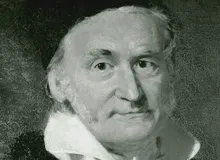
Schopenhauer
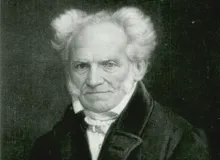
Büchner

Riemann

Waals
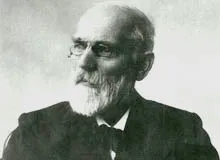
Vaihinger

Arrhenius
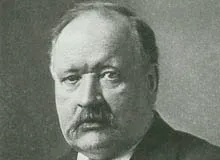
Durkheim

Heegaard
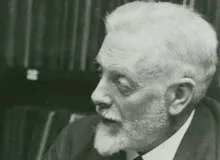
Bachelier
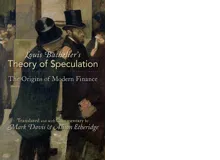
Lebesgue
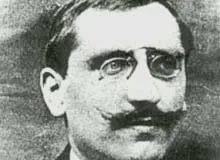
Curie
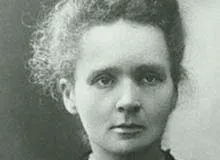
Einstein
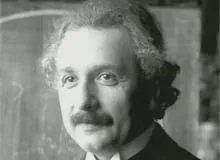
Ryan
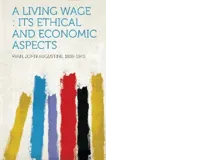
Wittgenstein

Broglie
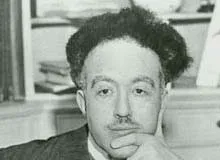
Vygotsky

Gödel
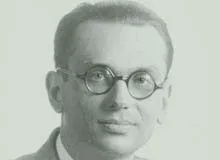
Lacan
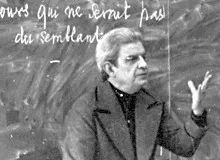
Frazier
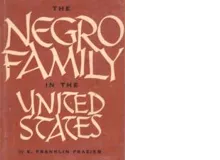
Onsager

Turing
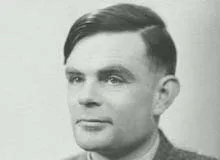
Shannon

Samuelson
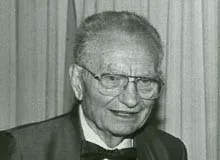
Feynman

Lévi-Strauss
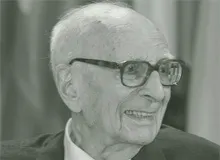
Nash
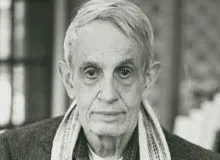
Arrow

Chomsky
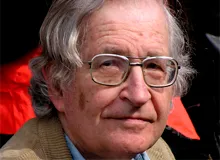
Everett
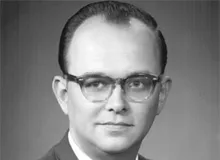
Sutherland
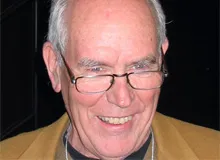
Gould
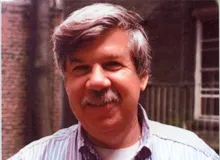
Humphreys

Millett
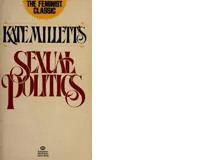
Spence
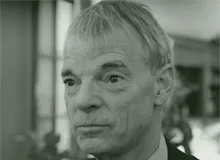
Binswanger

Paglia

Catmull

Wilson

Milgrom

Heim

Drexler
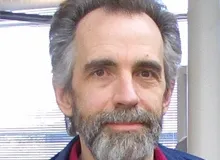
Goldhagen

Elst
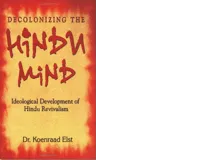
Mercuri
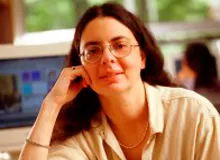

Sometimes referred to as the Prince of Mathematicians, and greatest mathematician since antiquity, Gauss had a remarkable influence in many fields of mathematics and science and is ranked as one of history's most influential mathematicians. He referred to mathematics as "the queen of sciences".<br><br> In his 1799 doctorate in absentia, "A new proof of the theorem that every integral rational algebraic function of one variable can be resolved into real factors of the first or second degree," Gauss proved the fundamental theorem of algebra which states that every non-constant single-variable polynomial with complex coefficients has at least one complex root. Mathematicians including Jean le Rond d'Alembert had produced false proofs before him, and Gauss's dissertation contains a critique of d'Alembert's work. <br>

Schopenhauer is best known for his book, "The World as Will and Representation," in which he claimed that our world is driven by a continually dissatisfied will, continually seeking satisfaction. His dissertation, which examined the four distinct aspects of experience in the phenomenal world influenced a long list of thinkers, including Friedrich Nietzsche, Richard Wagner, Ludwig Wittgenstein, Erwin Schrödinger, Albert Einstein, Sigmund Freud, Otto Rank, Carl Jung, Joseph Campbell, Leo Tolstoy, Thomas Mann, and Jorge Luis Borges.

Büchner was a German philosopher, physiologist, and physician who became one of the exponents of 19th century scientific materialism. Hallerian physiology was a theory competing with galvanism in Italy in the late 18th century. It is named after Albrecht von Haller, a Swiss physician who is considered the father of neurology. The hallerians' fundamental tenet held that muscular movements were produced by a mechanical force, different from life and from the nervous system, and which operated beyond consciousness. The activity of this function could be controlled in dead and dissected animals by touching a metal knife to the muscle fiber or by a spark being discharged on them. The electricity operated only as a stimulus of irritability, and it was irritability which was the one, true cause of the contractions.

Riemann's doctoral dissertation introduced the notion of a Riemann surface, conformal mapping, simple connectivity, the Riemann sphere, the Laurent series expansion for functions having poles and branch points, and the Riemann mapping theorem. Riemann's dissertation, completed under Gauss's supervision in 1851, was on the foundations of complex analysis. It introduced several ideas of fundamental importance, such as the definitions of conformal mapping and simple connectivity. These are necessary for one of his main results, the Riemann mapping theorem: any simply connected domain of the the complex plane having at least two boundary points can be conformally mapped onto the unit disk.

Van der Waals gave a semi-quantitative description of the phenomena of condensation and critical temperatures in his 1873 thesis, entitled "Over de Continuïteit van den Gas- en Vloeistoftoestand" (On the continuity of the gas and liquid state). This dissertation represented a hallmark in physics and was immediately recognized as such by James Clerk Maxwell, who reviewed it in "Nature" in a laudatory manner. Van der Waals is primarily associated with the van der Waals equation of state presented in this thesis, describing the behavior of gases and their condensation to the liquid phase. He went on to formulate the Law of Corresponding States, as well as to make other innovations in thermodynamics and physics. In 1910, van der Waals was awarded the Nobel Prize in physics.

Hans Vaihinger (September 25, 1852 – December 18, 1933) was a German philosopher, best known as a Kant scholar and for his Die Philosophie des Als Ob (The Philosophy of 'As If'), published in 1911, based on his dissertation of 1877. The work for which Vaihinger is best known, it was published in an English translation by C. K. Ogden in 1924.<br><br>Vaihinger's philosophy, based on his study of Immanuel Kant and Friedrich Nietzsche, holds that while sensations and feelings are real, the rest of human knowledge consists of "fictions" that can only be justified pragmatically. Even the laws of logic are fictions, albeit ones that have proved their indispensable worth in experience and are thus held to be undeniably true. It is not worth asking whether religious and metaphysical doctrines are true in an objective sense, since this cannot be discovered, but it is worth asking whether it is useful to act 'as if' they were true.

Arrhenius's Ph.D. thesis did not impress his professors, among whom was Per Teodor Cleve, and he received a fourth class degree, but upon his defence it was reclassified as third class. Later, extensions of this very work would earn him the 1903 Nobel Prize in Chemistry. Today, he is known for his theory of electrolytic dissociation and his model of the greenhouse effect.

Commonly cited as the principal architect of modern social science and father of sociology with Karl Marx and Max Weber. Durkheim's dissertation is a fundamental statement of the nature of human society and its development. In it, he describes how social order is maintained in societies based on two very different forms of solidarity (mechanical and organic), and the transition from more primitive societies to advanced industrial societies. <br><br> Throughout his career, Durkheim was concerned primarily with three goals. First, to establish sociology as a new academic discipline.Second, to analyze how societies could maintain their integrity and coherence in the modern era, when things such as shared religious and ethnic background could no longer be assumed; to that end he wrote much about the effect of laws, religion, education and similar forces on society and social integration.

Poul Heegaard's name occurs frequently (quite often misspelled as Heegard or even Hegard) in the area of three-manifolds where 'Heegaard decompositions' and the associated 'Heegaard diagrams' remain important tools 100 years after they first occurred in Heegaard's 1898 Copenhagen University dissertation.

Louis Jean-Baptiste Alphonse Bachelier (March 11, 1870 – April 28, 1946)[1] was a French mathematician at the turn of the 20th century. He is credited with being the first person to model the stochastic process now called Brownian motion, which was part of his PhD thesis <i>The Theory of Speculation</i>, (published 1900). <br><br>According to Jean-Michel Courtault et al., "The date March 29, 1900, should be considered as the birthdate of mathematical finance. . . . On that day, a French postgraduate student, Louis Bachelier, successfully defended at the Sorbonne his thesis. . . . This pioneering analysis of the stock and option markets contains several ideas of enormous value in both finance and probability. In particular, the theory of Brownian motion, one of the most important mathematical discoveries of the twentieth century, was initiated and used for the mathematical modeling of price movements and the evaluation of contingent claims in financial markets."

French mathematician most famous for his theory of integration, which was a generalization of the 17th century concept of integration—summing the area between an axis and the curve of a function defined for that axis. His theory was published originally in his dissertation Intégrale, longueur, aire ("Integral, length, area") at the University of Nancy during 1902.

Curie, now known as the Mother of Modern Physics, was the first woman to win a Nobel Prize, the only woman to win in two fields, and the only person to win in multiple sciences. She completed her Ph.D. thesis "Recherches sur les substances radioactives" in 1903, the same year that she shared the Nobel Prize in physics with her husband, Pierre and physicist Henri Becquerel. Her achievements included a theory of radioactivity (a term that she coined), techniques for isolating radioactive isotopes, and the discovery of two elements, polonium and radium. Under her direction, the world's first studies were conducted into the treatment of neoplasms, using radioactive isotopes. She founded the Curie Institutes in Paris and in Warsaw, which remain major centres of medical research today.

On 30 April 1905, Einstein completed his thesis, with Alfred Kleiner, Professor of Experimental Physics, serving as pro-forma advisor. That same year, which has been called Einstein's annus mirabilis (miracle year), he published four groundbreaking papers, on the photoelectric effect, Brownian motion, special relativity, and the equivalence of mass and energy, which were to bring him to the notice of the academic world. Einstein is often regarded as the father of modern physics and the most influential physicist of the 20th century. While best known for his mass–energy equivalence formula E = mc2 (which has been dubbed "the world's most famous equation"), he received the 1921 Nobel Prize in Physics "for his services to theoretical physics, and especially for his discovery of the law of the photoelectric effect". The latter was pivotal in establishing quantum theory.

John Augustine Ryan (1869–1945) was a leading Catholic priest who was a noted moral theologian, professor, author and advocate of social justice. While Ryan identified himself primarily as a moral theologian, he also made important contributions to American political life and economic thought. He supported a number of social reforms that were eventually incorporated into the New Deal, and have become elemental to the modern welfare state. Ryan’s most well-known contribution to American economic thought was his argument for a minimum wage presented in his doctoral dissertation, A Living Wage.

In his lifetime, Wittgenstein published just one book review, one article, a children's dictionary, and the 75-page "Tractatus Logico-Philosophicus" (1921), which served as his Ph.D. thesis at Cambridge. By showing the application of modern logic to metaphysics, via language, he provided new insights into the relations between world, thought and language and thereby into the nature of philosophy. He is considered by some to be the greatest philosopher of the 20th century.

His 1924 "Recherches sur la théorie des quanta" (Research on the Theory of the Quanta), introduced his theory of electron waves. This included the wave-particle duality theory of matter, based on the work of Max Planck and Albert Einstein on light. The thesis examiners, unsure of the material, passed his thesis to Einstein for evaluation who endorsed his wave-particle duality proposal wholeheartedly; de Broglie was awarded his doctorate. This research culminated in the de Broglie hypothesis stating that any moving particle or object had an associated wave. De Broglie thus created a new field in physics, the mécanique ondulatoire, or wave mechanics, uniting the physics of energy (wave) and matter (particle). For this he won the Nobel Prize in Physics in 1929.

Vygotsky was a pioneering psychologist and his major works span six separate volumes, written over roughly 10 years, from "Psychology of Art" (1925 but not published until 1960s) to "Thought and Language [or Thinking and Speech]" (1934). Vygotsky's interests in the fields of developmental psychology, child development, and education were extremely diverse. His philosophical framework includes insightful interpretations of the cognitive role of mediation tools, as well as the re-interpretation of well-known concepts in psychology such as internalization of knowledge. Vygotsky introduced the notion of zone of proximal development, an innovative metaphor capable of describing the potential of human cognitive development. His work covered such diverse topics as the origin and the psychology of art, development of higher mental functions, philosophy of science and methodology of psychological research, the relation between learning and human development, concept formation, interrelation between language and thought development, play as a psychological phenomenon, learning disabilities, and abnormal human development (aka defectology).

Best known for the completeness of the first-order predicate calculus, a theorem first presented in his doctoral dissertation of 1929 (and a rewritten version of the dissertation, published as an article in 1930), now commonly know as Gödel's completeness theorem. To prove this theorem, Gödel developed a technique now known as Gödel numbering, which codes formal expressions as natural numbers. His theorems ended a half-century of attempts, beginning with the work of Frege and culminating in Principia Mathematica and Hilbert's formalism, to find a set of axioms sufficient for all mathematics. He is considered one of the most significant logicians in human history, with Aristotle and Frege, Gödel made an immense impact upon scientific and philosophical thinking in the 20th century, a time when many, such as Bertrand Russell, A. N. Whitehead and David Hilbert, were pioneering the use of logic and set theory to understand the foundations of mathematics.

Jacques Marie Émile Lacan (13 April 1901 – 9 September 1981) was a French psychoanalyst and psychiatrist who has been called "the most controversial psycho-analyst since Freud". Lacan's post-structuralist theory rejected the belief that reality can be captured in language. <br><br> Because of his thesis he becomes a specialist in paranoia. The richness of his text and the multiplicity of its aspects appealed to very different circles, especially the analysis of the case of Aimée make him famous with the Surrealists. Between this year and 1939, he takes Kojève's course at the Ecole Pratique des Hautes Etudes, an "Introduction to the Reading of Hegel." He publishes Motifs du crime paranoïque: le crime des soeurs Papin. Minotaure 3/4. <br><br> Giving yearly seminars in Paris from 1953 to 1981, Lacan influenced France's intellectuals in the 1960s and the 1970s, especially the post-structuralist philosophers. His ideas have had a significant impact on critical theory, literary theory, 20th-century French philosophy, sociology, feminist theory, film theory and clinical psychoanalysis.

Edward Franklin Frazier (September 24, 1894 - May 17, 1962), was an American sociologist. His 1932 Ph.D. dissertation The Negro Family in Chicago, later released as a book The Negro Family in the United States in 1939, analyzed the cultural and historical forces that influenced the development of the African-American family from the time of slavery. The book was awarded the 1940 Anisfield-Wolf Book Award for the most significant work in the field of race relations. This book was among the first sociological works on blacks researched and written by a black person. He helped draft the UNESCO statement The Race Question in 1950.

Onsager submitted his Ph.D. thesis to the Norwegian Institute of Technology in the 1920s, in the area of thermodynamics (reciprocal relationships in non-equilibrium systems). Regrettably, the thesis was found to be somewhat below the level required for an advanced degree at that institution, and no Ph.D. was granted. Onsager went on to a stellar career as a theoretician in the physical sciences and subsequently won the 1968 Nobel prize in chemistry for his work on reciprocal relationships in non-equilibrium systems.

Alan Turing was a mathematician who in 1937 suggested a theoretical machine, since called a Turing Machine, that became the basis of modern computing. In 1950 he suggested what has become known as a "Turing's test," still the criterion for recognizing intelligence in a machine. His best known published work titled "On Computable Numbers," is actually his Master's thesis completed at King's College, Cambridge in 1936. During World War II, Turing led the team that succeeded in breaking German high-level secret codes, using the first practical programmed computer, called Colossus.

Shannon's 1937 Master's thesis, describing how digital circuits could implement Boolean logic, may well be the most famous Master's thesis in existence. He went on to develop similar mathematical relationships for Mendelian genetics in his 1940 Ph.D. thesis, "An Algebra for Theoretical Genetics." Shannon is credited with founding information theory, digital computer theory, and digital circuit design theory, and is known as "The Father of Information Theory."

Known as the Father of Modern Economics, Samuelson is considered to be one of the founders of neo-Keynesian economics and a seminal figure in the development of neoclassical economics. His 1941 dissertation provided the basis of his 1947 magnum opus "Foundations of Economic Analysis," the largest-selling economics textbook of all time; it is now in its 19th edition, having sold nearly 4 million copies in 40 languages. Samuelson was also the first American to win the Nobel Memorial Prize in Economic Sciences.

During his lifetime, Feynman became one of the best-known scientists in the world. His 1942 thesis applied the principle of stationary action to problems of quantum mechanics, inspired by a desire to quantize the Wheeler–Feynman absorber theory of electrodynamics. This laid the groundwork for the "path integral" approach and Feynman diagrams. For his contributions to the development of quantum electrodynamics, Feynman, jointly with Julian Schwinger and Sin-Itiro Tomonaga, received the Nobel Prize in Physics in 1965.

Lévi-Strauss' 1948 dissertation formed the basis of his book "The Elementary Structures of Kinship," which quickly came to be regarded as one of the most important anthropological works on kinship. In the thesis, he proposed the "alliance theory," a structuralist model for the anthropological study of relations and kinship, which marked the beginning of his reknown as an anthropologist and ethnologist. He has been called, along with James George Frazer and Franz Boas, the "father of modern anthropology."

Nash's 28-page dissertation on non-cooperative games, which was written under the supervision of Albert W. Tucker, contained the definition and properties of what would later be called the "Nash equilibrium." The equilibrium describes a situation in which no player, taking the other players’ strategies as given, can improve his position by choosing an alternative strategy. This and other theories Nash went on to develop are used in market economics, computing, evolutionary biology, artificial intelligence, accounting, politics and military theory. 44 years after writing his dissertation, Nash shared the 1994 Nobel Prize in economics with John Harsanyi and Reinhard Selten “for their pioneering analysis of equilibria in the theory of non-cooperative games.”

Arrow's impact on the economics profession has been tremendous. For more than fifty years he has been one of the most influential of all practicing economists. His most significant works are his contributions to social choice theory, notably "Arrow's impossibility theorem" for which he won the Nobel Memorial Prize in Economics with John Hicks in 1972, derives from his Ph.D. thesis. He has also provided foundational work in many other areas of economics, including endogenous growth theory and the economics of information. In economics, he is considered an important figure in post-World War II neo-classical economic theory. Many of his former graduate students have gone on to win the Nobel Memorial Prize themselves.

Chomsky received his Ph.D. in linguistics from the University of Pennsylvania in 1955. He conducted part of his doctoral research during four years at Harvard University as a Harvard Junior Fellow. In his doctoral thesis, he began to develop some of his linguistic ideas, elaborating on them in his 1957 book "Syntactic Structures," one of his best-known works in linguistics. Chomsky has been described as the "father of modern linguistics" and is today a major figure of analytic philosophy.

Although he completed his dissertation in 1957, Everett's contributions to mathematics and quantum theory were not recognized until much later. In his paper, "Theory of the Universal Wave Function," he explained that the universe is describable, in theory, by an objectively existing universal wave function (which does not "collapse")- a theory which was ridiculed by his contemporaries. In the 1970s, Everett's dissertation was published for the first time as part of an anthology about the many-worlds interpretation of quantum mechanics. The book was published late in 1973, sold out completely, and it was not long before an article on Everett's work appeared in the science fiction magazine, "Analog."

With his Ph.D. thesis "Sketchpad: A man-machine graphical communication system," Sutherland introduced Sketchpad, an innovative program that influenced alternative forms of interaction with computers. Sketchpad could accept constraints and specified relationships among segments and arcs, including the diameter of arcs. It could draw both horizontal and vertical lines and combine them into figures and shapes. Figures could be copied, moved, rotated, or resized, retaining their basic properties. Sketchpad also had the first window-drawing program and clipping algorithm, which allowed zooming.

While writing his Ph.D. thesis about the fossil land snails of Bermuda, Gould and his fellow graduate student, Niles Eldredge, noticed appearances of relatively new fossil forms, followed by long periods in which these organisms changed little. This observation led to the theory of punctuated equilibrium, in which evolutionary change occurs relatively rapidly, alternating with longer periods of relative evolutionary stability, proposed by Gould and Eldredge in 1972. Gould is also known for his contributions to evolutionary developmental biology, popular science writing, and arguments against creationism.

Robert Allen "Laud" Humphreys, (October 16, 1930–August 23, 1988) was an American sociologist and author. Humphreys is best known for his published Ph.D. dissertation, Tearoom Trade (1970), an ethnographic study of anonymous male-male sexual encounters in public toilets (a practice known as "tea-rooming" in U.S. gay slang). Because Humphreys was able to confirm that over 50% of his subjects were outwardly heterosexual men with unsuspecting wives at home, a primary thesis of Tearoom Trade is the incongruence between the private self and the social self for many of the men engaging in this form of homosexual activity. Because the researcher misrepresented his identity and intent and because the privacy of the subjects was infringed during the study, "Tearoom Trade" has caused a major debate on privacy for research participants and is now often used as an example of highly controversial social research. He earned his Ph.D from Washington University in St. Louis in 1968. Due to the perceived dishonesty of his research methods, there was a failed attempt by some faculty members at Washington University to rescind his PhD.

Millett's Ph.D. thesis, "Sexual Politics" was published as a book in 1970 and sold 22,000 copies in its first month of publication. Its comprehensive critique of patriarchy in Western society and literature both garnered much controversy and made it a cornerstone of radical feminist theory. "Sexual Politics" concludes with the first extended feminist literary analysis, which focuses on the degraded images of women found in the work of such male authors as D. H. Lawrence, Henry Miller, and Norman Mailer.

An American economist and recipient of the 2001 Nobel Memorial Prize in Economic Sciences, along with George A. Akerlof and Joseph E. Stiglitz, for their work on the dynamics of information flows and market development. He conducted this research while at Harvard University. His work triggered the enormous volume of literature in this branch of contract theory. In this model, employees signal their respective skills to employers by acquiring a certain degree of education, which is costly to them. Employers will pay higher wages to more educated employees, because they know that the proportion of employees with high abilities is higher among the educated ones, as it is less costly for them to acquire education than it is for employees with low abilities. For the model to work, it is not even necessary for education to have any intrinsic value if it can convey information about the sender (employee) to the recipient (employer) and if the signal is costly.

His dissertation presented a new theory of the goal-directedness of living action, in opposition to the views of one of his dissertation advisers, Ernest Nagel. The dissertation was later published as "The Biological Basis of Teleological Concepts."

Paglia's first book, "Sexual Personae: Art and Decadence from Nefertiti to Emily Dickinson" (1990), was an adaptation of her 1974 doctoral dissertation at Yale. It was rejected by numerous publishers, but when finally published, became a best seller, reaching seventh place on the paperback best-seller list, a rare accomplishment for a scholarly book. Paglia is widely known for her views and writing on feminism, politics, popular culture, and art.

In 1974, while studying physics and computer science at University of Utah, Catmull’s pioneering animation of a human hand was incorporated into the first movie to use 3D computer graphics. Through his research, he made four key computer graphics discoveries: Z-buffering, texture mapping, subdivision surface, and the fast rendering of bicubic patches. Catmull is the current president of Walt Disney Animation Studios and Pixar Animation Studios.

Robert Anton Wilson (born Robert Edward Wilson, January 18, 1932 – January 11, 2007), known to friends as "Bob", was an American author and polymath who became at various times a novelist, philosopher, psychologist, essayist, editor, playwright, poet, futurist, civil libertarian] and self-described agnostic mystic. Wilson described his work as an "attempt to break down conditioned associations, to look at the world in a new way, with many models recognized as models or maps, and no one model elevated to the truth". His goal being "to try to get people into a state of generalized agnosticism, not agnosticism about God alone but agnosticism about everything." In 1979 he received a Ph.D. in psychology from Paideia University in California,[5] an unaccredited institution that has since closed.Wilson reworked his dissertation, and it found publication in 1983 as Prometheus Rising.

Milgrom is an expert in game theory, specifically auction theory and pricing strategies. He is also the co-creator of the no-trade theorem with Nancy Stokey, and the co-founder of several companies, the most recent of which, Auctionomics, provides software and services that create efficient markets for complex commercial auctions and exchanges.

Heim is a linguist and noted specialist in semantics possibly most famous for her Ph.D. dissertation. In the work she argued (developing an insight by the philosopher David Lewis) that indefinite noun phrases like "a cat" in the sentence "If a cat is not in Athens, she is in Rhodes" are not quantifiers but free variables bound by an existential operator inserted in the sentence by a semantic operation that she dubbed existential closure.

Drexler's Ph.D. work was the first doctoral degree on the topic of molecular nanotechnology and (after some editing) his thesis was published as "Nanosystems: Molecular Machinery, Manufacturing and Computation" (1992), which received the Association of American Publishers award for Best Computer Science Book of 1992.

Goldhagen's Ph.D. thesis formed the basis of his book "Hitler's Willing Executioners," which was written largely as an answer to Christopher Browning's 1992 publication on the Holocaust, "Ordinary Men." Much of Goldhagen's book was concerned with the same Order Police Battalion 101 that Browning had studied, though with very different conclusions. It won the American Political Science Association's 1994 Gabriel A. Almond Award in comparative politics and the Democracy Prize of the Journal for German and International Politics, and was reported by Time mamgazine as one of the two most important books of 1996.

Koenraad Elst (born 7 August 1959) is a Belgian writer and orientalist (without institutional affiliation). He was an editor of the New Right Flemish nationalist journal Teksten, Kommentaren en Studies from 1992 to 1995, focusing on criticism of Islam, various other conservative and Flemish separatist publications such as Nucleus, 't Pallieterke, Secessie, or the neoconservative The Brussels Journal and Middle East Forum. <br><br>The main portion of his Ph.D. dissertation on Hindu revivalism and Hindu reform movements eventually became his book Decolonizing the Hindu Mind. Other parts of his Ph.D. thesis were published in Who is a Hindu and The Saffron Swastika. He studied at the Banaras Hindu University in India. Several of his books on communalism and Indian politics are published by the Voice of India publishing house.<br><br> His writings are frequently featured in right-wing publications and many of his books are published by Voice Of India publishing house.

Mercuri's 2001 dissertation springboarded her research into computer security, especially in electronic voting where she has been researching, writing about, and testifying since 1989. She is known to have popularized the idea of using voter-verified paper ballots, whereby an electronic voting machine prints a paper ballot under transparent glass or plastic for the voter to verify before casting their vote (often referred to as the "Mercuri method").